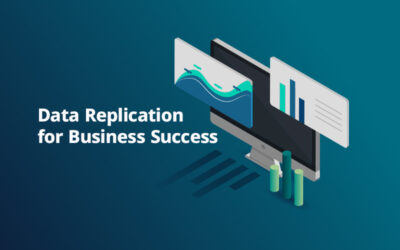Amidst the serious effort to handle pandemic-related changes, businesses are scaling down to automation. Hyper-automation has been a trend in diverse business areas for several years now. The banking and finance sector has been one of the first to embrace this technology. In fact, banks utilize this advanced automation technology for processing payments, managing accounts, and automating certain back-office functions such as risk management and credit scoring. Hyperautomation in banking improves operational efficiency, reduces costs, and creates new business opportunities thereby delivering a higher level of customer service. It also helps streamline financial operations as they can easily gather data and analyze it to make informed decisions. Partnering with a business process outsourcing company can help banks implement the hyperautomation solutions efficiently.
Why Hyperautomation Becomes the Right Choice for Banks
Hyperautomation of the entire core banking system can help minimize data processing time, operational expenses thereby enabling you to focus more on customer relationships. In specific terms, the automation technology allows banks to –
- To update and aggregate data in real time
- Allows banking staff to gather real-time reports automatically
- Recognize risks and opportunities in advance to make operational decisions instantly
- Minimize manual tasks to free up staff to focus on their core banking tasks
- Improves accuracy and reduces error rates
- Increase security through decentralizing data access and recording behavior for easy retrieval and tracking (if required)
- Increases the customer experience by accelerating activity processing and meeting customer requests
Top Applications of Hyperautomation in Banking
The banking industry has been undergoing many unanticipated changes since the COVID-19 pandemic. Hyperautomation in banking is one of those changes. The significant role of hyper-automation is to increase the speed at which banks can process transactions; manage their assets and offer products and services to customers. In addition, it helps banks to achieve their goals by providing increased accuracy and visibility into the processes they need to run. Here discussed are some key applications of hyper-automation in core banking activities –
- Regulatory Reporting – Hyper-automation of management processes makes it easier for banks to adapt to increasingly complex regulatory reporting requirements. With this technology, the entire regulatory reporting process will be automated right from the beginning to the end. Many banks are already using robotic process automation (RPA) and cognitive intelligence (CI) technologies to –
- Automate manual tasks 24/7 without human supervision
- Improve data quality and documentation
- Redeployment of human workers to higher value tasks
However, technologies like RPA are not a one-size fits all solution for the end-to-end regulatory reporting landscape. In fact, complete automation will require a complex, multi-year implementation and transformation in the culture of the banking organization. In fact, the key aspect for banks is to focus on activities that can be automated in the short-term while continuing to adapt to increasingly complex regulatory reporting requirements and implementing innovative new technologies.
- Marketing – Hyperautomation of marketing allows banks to reach customers via multiple channels and personalize the customer experience. Banks automate the manual task of posting content, sending email responses or generating email chains – that are repetitive and time-consuming. With marketing automation, employees can focus on performing higher-value tasks. According to a Hubspot survey, marketing automation may increase 451 percent more qualified leads. For instance, a prospective customer may sign up to receive a newsletter or express interest in a banking product. This could trigger a series of emails that move the customer further along the customer journey. It could also generate a workflow that directs sales to follow up, as well as increase collaboration between the marketing and sales teams.
- Sales and Distribution – The banking industry is searching for distribution models that align with cross-channel consumer preferences and behaviors. According to a recent study by Boston Consulting Group, branch-centered distribution models will evolve by 2025 in nearly every country. Reformed branches that perform in-person and remote relationships (along with customer contact centers and specialist sales teams) will play a significant role to a digitally dominated proposition. Banks can use five levers to increase profitability by as much as 25 percent –
- Shifting from contact centers to customer care platforms
- Reducing branch networks while optimizing the remaining branches
- Implementing the intelligent routing of customer requests between digital and assisted channels
- Embedding “distribution” on partner platform services through APIs
- Harnessing the creativity and passion of frontline workers to satisfy customer needs
- Lending – Hyperautomation eliminates complicated paper-based processes. Two factors that led to automation in lending operations are cost reduction initiatives and improving customer experiences. Earlier, loan processes (both consumer and commercial loans) tended to rely heavily on inefficient paper-based processes. Hyperautomation technologies can automatically extract important loan data from loan application processes in a short period of time, which in turn reduces error-prone manual paperwork. For instance, JPMorgan Chase’s contract intelligence platform, COIN, which helps JPMorgan reduce around 360,000 hours of manual labor each year, is a great example of Hyperautomation in lending.
- Back-office Operations – Hyper-automating back-office operations allows banks to better focus on developing customer relationships, thereby improving the entire customer experience. Through intuitive, low-code platforms like business process management (BPM), banks can easily automate their complex back-office processes.
With the rapid adoption of AI and machine learning, there is an increasing trend for businesses to automate their processes. This goes beyond simple tasks such as data mining, information processing, and decision making. Sometimes, it can mean automating complex human-in-the-loop processes and activities (such as maintenance, sales, distribution, marketing or even production). With hyperautomation, banks can meet the growing and changing customer demands and increase employee productivity and work efficiency in the long run. Experienced companies providing business process outsourcing solutions can help apply these advanced automation technologies effectively and swiftly in the banking sector.




